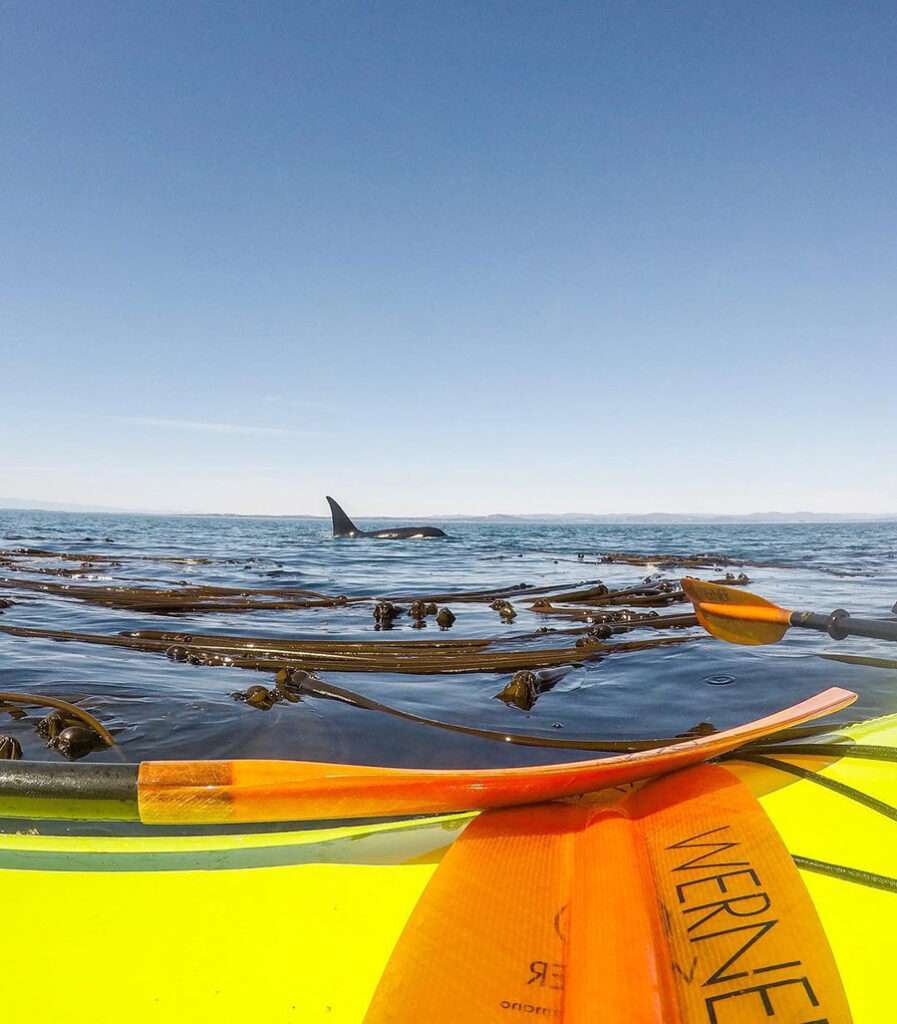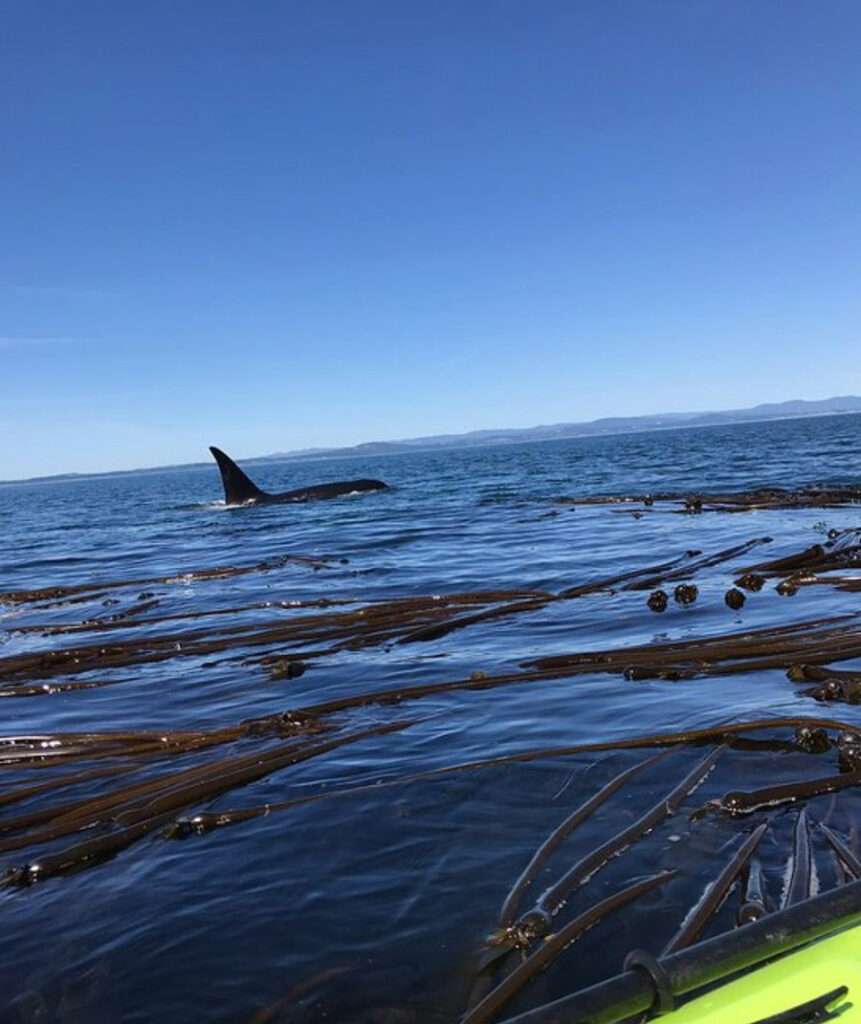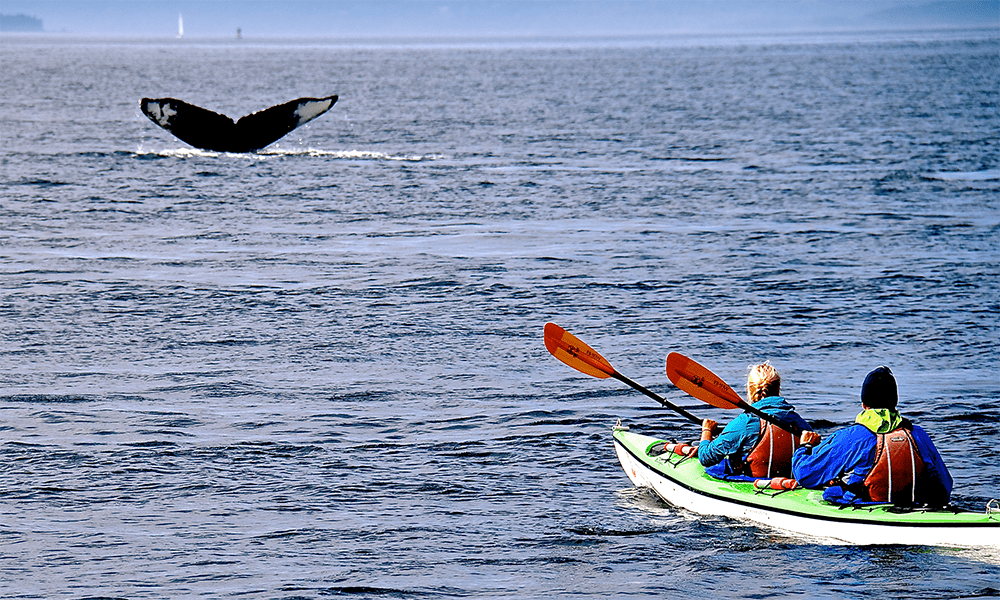
“When is the best time of year to see whales?” is a question that we get a lot, and the answer is not so straight forward. While the west side of San Juan Island has historically been one of the best places in the world to see orcas, things are changing rapidly, and viewings are not as common as they once were. By educating and informing people, my goal is to both set realistic expectations and inspire the change necessary to make a difference!
While the Salish Sea is home to many species of whales, primarily migratory species travelling to and from Alaska and Hawaii, the orcas seem to be a fan favorite and it is easy to see why. Orcas are in fact the largest member of the dolphin family and have teeth rather than baleen. They are apex predators which means they are on top of the food chain, though it is not because of their size alone. Orcas are extremely intelligent and are known as the “wolves of the sea” because they hunt in packs and often outsmart their prey. Orcas exist in all the world’s major oceans, making them the most widely distributed mammals in the world apart from humans.
There are three primary ecotypes worldwide, and they are classified based on their diet and hunting techniques. The first type is offshore orcas, which travel in large pods or matrilines and live out in the open ocean. Offshore orcas eat very high on the food chain – sharks, smaller whales, and other large mammals. They were first discovered in 1979 when they were spotted off Haida Gwaii, however due to their tendency to be far offshore and wary of boats once found, humans know relatively very little about them.
The other two ecotypes are “transients” and “residents” both of which have populations in the Salish Sea and are largely distinguished by their food source. “Transients” travel in small family groups and hunt higher on the food chain, eating seals and sea lions primarily. Due to the warming of the oceans along with several other ecological factors, we have seen a significant increase in the local seal and sea lion populations which has led to an uptick in “transient” orca sightings in recent years. Because seals are plentiful throughout the San Juan Islands, “transients” can be observed in many areas not usually frequented by “residents”.
“Resident” orcas eat fish, and historically, Lime Kiln Point has been one of the best places in the world to see these orcas from dry land. This is because the “residents” typically visit the San Juans in the summer months to feed on the Chinook salmon or “king” salmon, which were travelling north to the Frasier River in British Columbia to spawn and carry on the life cycle of a salmon. Adult orcas can eat up to 150 pounds of fish per day and ultimately, they go wherever the food is. The local Chinook salmon populations have decreased significantly due to several human impact factors, the largest being hydroelectric dams and commercial fishing, which have led to much fewer “resident” sightings in recent summers.
While the declining number of salmon is due in large part to human factors, it isn’t too late for us to take action and help local salmon populations rebound! The steep historical decline in Chinook salmon is associated with four main factors: habitat loss and degradation, harvest rates, hatchery influence, and dams that impede migrations. On a large scale, advocating for dam removals and more regulations across maritime industries can help restore salmon habitats. As individuals, there are also multiple things we can do to contribute. Keeping litter and trash out of streams is important because trash can pile up on logs and block water flow, preventing salmon from reaching their spawning grounds. Summer is the best time for stream cleanup to reduce impacts to key salmon life-cycle stages that typically occur in spring and fall. You can help protect natural shorelines, wetlands, and floodplains in your community by volunteering and supporting a local conservation organization or watershed group. Look for sustainably harvested salmon at your local supermarket or favorite restaurant if eating fish is something that you aren’t willing to give up. If you fish, be aware of relevant local and national regulations that may restrict what species or amounts you can take.

Until native salmon populations are no longer considered endangered, you can expect fewer “resident” orca sightings in the area. When you are travelling to the Pacific Northwest or the San Juan Islands, temper your expectations. Enjoy the area for its natural beauty and rich cultural history and consider yourself very lucky if you come into close contact with one of the world’s most fascinating creatures. In the end, they are wild animals, and the ocean is their home – we are just visiting.










